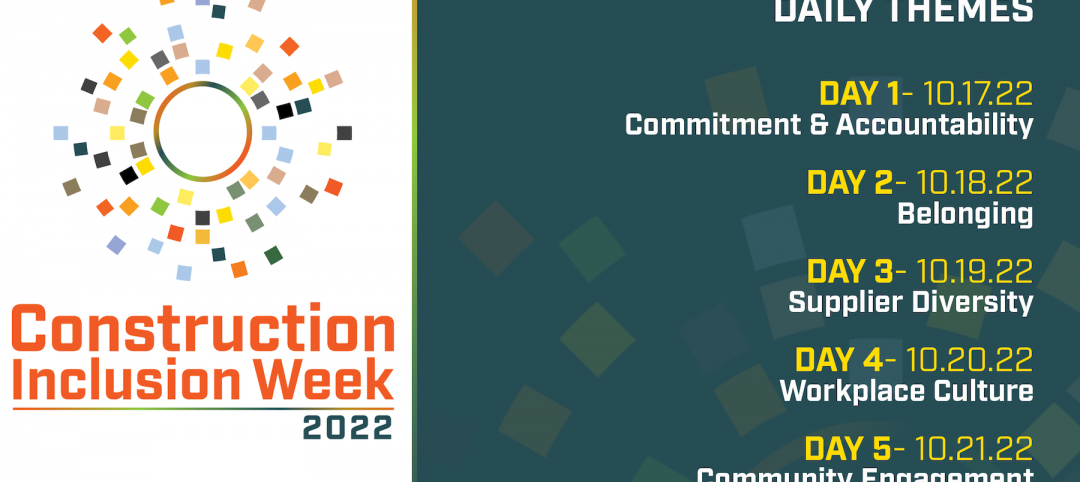Women account for more than half of the U.S. population. But even with significant gains over the past 25 years, their numbers and positions among the ranks of practicing architects appear to have stalled.
The reasons could be a combination of too few role models, mentors, and advancement opportunities, based to a statistical analysis of women’s progress in this field by the Association of Collegiate Schools of Architecture (ACSA).
Looking at recent data from a wide range of sources—including the Bureau of Labor Statistics, AIA, National Architectural Accrediting Board, the National Center for Education Statistics, and the National Council for Architectural Registration Boards—the association found that while the number of female architectural students and graduates has stabilized at around 40%, the number of women working in architect roles has also stopped increasing, and hasn’t gone much higher than 25%.
Indeed, AIA’s Foresight Report indicated that, in 2011 (the latest year for which data were available), only 30% of its women members were associates in their firms, and only 17% were principals or partners. In fact, just 15% of AIA’s licensed members were women that year. And a mere 13% of Intern Development Program supervisors, who review the work of intern architects submitting IDP hours, were female.
“Even with a sizable margin of error it is clear that there are far fewer women in practice than in school,” said Lian Chikako Chang, ACSA’s Director of Research and Information, who authored this report.
The reasons why this “leaky pipeline” persists, however, are less clear.
While Chang doesn’t state this outright, the perception of women architects as second-class citizens might have its roots in academia, where only around one quarter of lecturers, directors, heads and chairs of U.S. architectural schools are female, and only 19% of deans.
It could also be argued that women are leaving the profession at higher rates than men because they are discouraged by the lack of industry recognition their work receives. Only 5% of all TOPAZ Medallion recipients have been women, and about the same percentage of Pritzker Prize winners. Since 1907, only one of the 69 AIA Gold Medals has been awarded to a woman, and that was posthumously in 2014.
“With the share of awards going to women increasing by about 5% each decade, if we continue at this pace we’ll be waiting until 2080 to see a 50-50 split,” Chang notes sardonically.
While the author offered no specific prescriptions, Chang asserted that a more systematic approach to professional development will be required in order to encourage and support women in progressing and achieving as architects at rates more equal to those of men.
“The data reviewed here suggest that we should focus particularly on two areas: first, what happens before applying to and enrolling in architecture school; and second, what happens at higher levels in the profession, academia, and related practices,” she said.
Related Stories
Building Technology | Jun 9, 2022
GSA Green Proving Ground program selects six innovative building technologies for evaluation
The U.S. General Services Administration’s (GSA) Green Proving Ground program, in collaboration with the U.S. Department of Energy, has selected six innovative building technologies for evaluation in GSA’s inventory.
University Buildings | Jun 9, 2022
IDEA Factory at U. of Maryland defies gravity
The E.A. Fernandez IDEA Factory at the University of Maryland’s A. James Clark School of Engineering has a gravity-defying form: The seven-story building’s solid upper floors emerge above the lighter, mostly glass base.
Multifamily Housing | Jun 9, 2022
Cityview's Adam Perry on multifamily housing innovation in the Western U.S.
Adam Perry, SVP of Development and Construction Management with developer Cityview, chats with Multifamily Design+Construction Editor Rob Cassidy about the latest design and construction innovations for multifamily housing in the West.
Libraries | Jun 8, 2022
Welcome to the hybrid library
Libraries have grown to become the intellectual and social hubs of campus, where, prior to March 2020, students, researchers, and faculty gathered to collaborate and connect.
Building Team | Jun 8, 2022
Alastair MacGregor to lead WSP USA Property and Buildings Business
Alastair (Aly) MacGregor has been named the executive business line leader for Property and Buildings at WSP USA, one of the nation’s largest engineering and professional services consultancies.
Codes and Standards | Jun 8, 2022
Florida Legislature passes bill requiring stricter condominium inspection
The Florida Legislature recently passed a bill to beef up building inspection requirements for many of the state’s condominiums.
Office Buildings | Jun 8, 2022
Former L.A. Times newsroom/printing plant remade into office campus
Phase 1 of The Press, an adaptive reuse project that is converting an old Los Angeles Times facility into a modern office campus, was recently completed in Costa Mesa, Calif.
Codes and Standards | Jun 7, 2022
FEMA launches National Initiative to Advance Building Codes
The U.S. Federal Emergency Management Agency (FEMA) has launched a new government-wide effort to boost national resiliency and reduce energy costs.
Plumbing | Jun 7, 2022
Sloan launches ‘Sinks Beyond the Restroom’ innovation
Sloan, the world’s leading manufacturer of commercial plumbing systems, has launched its ‘Sinks Beyond the Restroom’ concept.
Building Team | Jun 7, 2022
Announcing construction inclusion week 2022: October 17-21, 2022
Save the date for Construction Inclusion Week 2022: October 17-21, 2022.

















